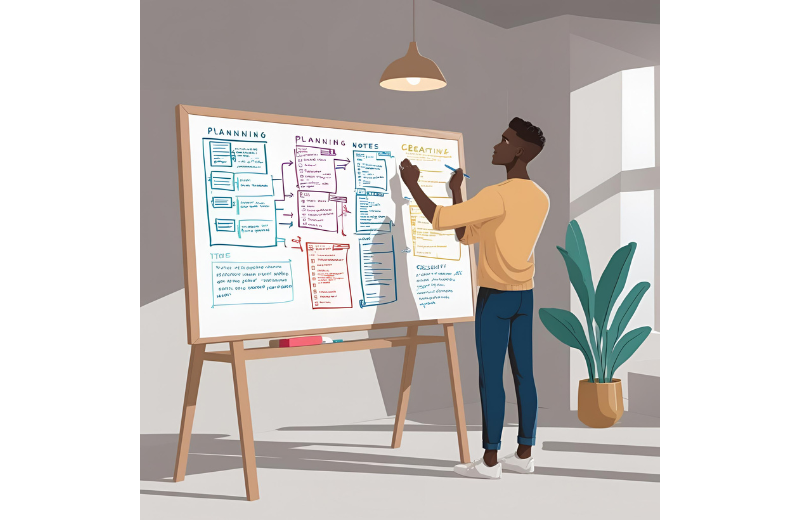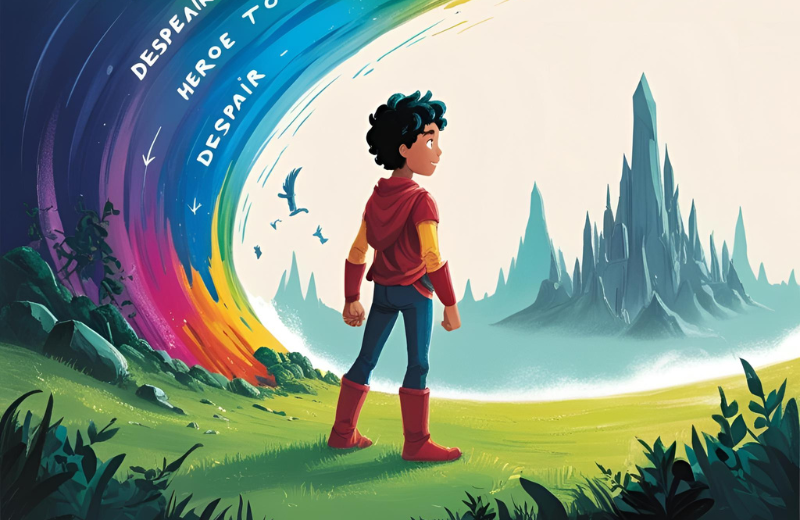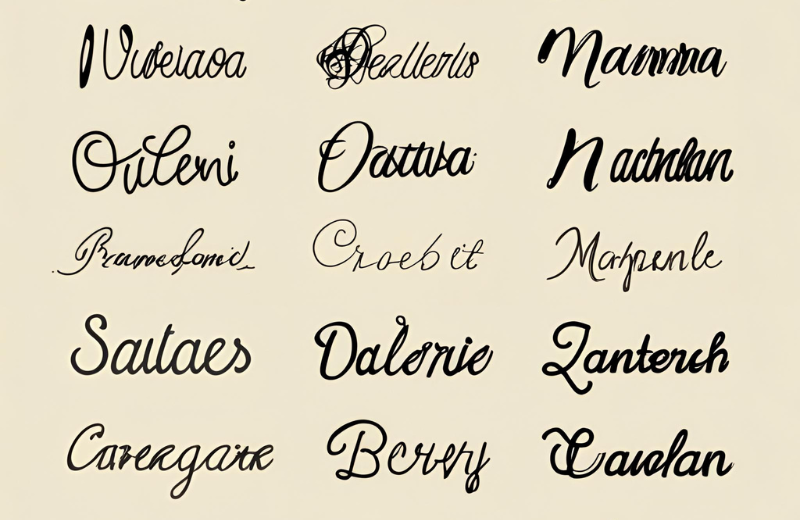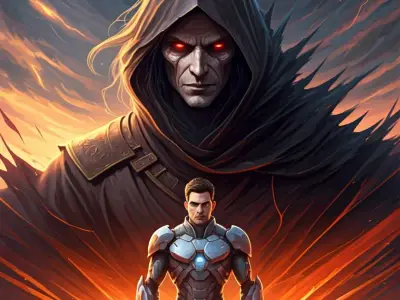Creating compelling characters is one of the most important aspects of writing a captivating story. Characters breathe life into your narrative, engage readers, and drive the plot forward.
Whether you're developing a protagonist, side characters, or a villain, every character must feel real, relatable, and dynamic. Follow these steps to create compelling and diverse characters for your book.
Jump to:
- Understanding the Different Types of Characters in a Story
- Developing a Character Profile
- Crafting a Character Backstory
- Creating Unique Character Traits
- Developing Character Arcs and Growth
- Writing Dynamic Character Descriptions
- Naming Characters Effectively
- Making Characters Relatable and Believable
- Study Our Creative Writing Diploma for £29
Recommended for you!
Best Sellers1. Understanding the Different Types of Characters in a Story
Before beginning your character creation, it’s useful to understand the different types of characters that populate a story. Each type serves a specific purpose, contributing to the plot and shaping the reader’s experience. Let’s explore these key character types in more detail:
Protagonist: The Driving Force of the Story
The protagonist is the main character around whom the story revolves. They are the focal point of the narrative, and their actions and decisions drive the plot forward. Protagonists can be heroes, antiheroes, or even morally grey characters. Their journey, growth, and conflicts form the backbone of the story, keeping readers invested in their fate.
Example: Harry Potter in the Harry Potter series is a protagonist who faces numerous challenges, evolving from a naïve boy to a courageous hero.
Antagonist: The Source of Conflict
The antagonist is the character who opposes the protagonist, creating obstacles and tension throughout the story. They can be an outright villain, a rival, or simply someone with conflicting goals. An antagonist isn’t always evil; they may believe they are justified in their actions, making them a more complex and compelling character.
Example: Lord Voldemort in the Harry Potter series is a classic antagonist driven by a desire for power and immortality, directly opposing Harry’s quest for peace and justice.
Side Characters/Secondary Characters: Supporting the Main Cast
Secondary characters provide depth, context, and support to the protagonist’s journey. They can be friends, mentors, sidekicks, or even adversaries. While they may not undergo as much development as the protagonist, they play a role in influencing the main character’s actions and decisions.
Example: Ron Weasley and Hermione Granger in the Harry Potter series are pivotal side characters who aid Harry throughout his journey, each bringing their unique strengths and perspectives to the narrative.
Static Characters: Remaining Unchanged
Static characters remain largely the same throughout the story. Their personalities, beliefs, and attitudes do not undergo significant change or growth. They often serve as foils to the protagonist, highlighting the changes and growth experienced by the main character.
Example: Hagrid in the Harry Potter series is a static character who consistently remains kind-hearted, loyal, and protective, regardless of the events unfolding around him.
Dynamic Characters: Evolving Over Time
Dynamic characters undergo significant changes in personality, beliefs, or perspective throughout the story. These transformations are typically a result of the conflicts they face and the lessons they learn. Dynamic characters are compelling because they mirror real-life growth and development, making them relatable and memorable.
Example: Severus Snape in the Harry Potter series is a dynamic character whose initial portrayal as a villain gradually evolves, revealing a complex backstory and unexpected motivations.
2. Developing a Character Profile

A character profile serves as a detailed blueprint that outlines a character’s traits, background, and motivations. It helps maintain consistency in the way a character behaves and reacts.
How to Make a Character Profile:
- Name: Choose a name that reflects the character’s personality or cultural background.
- Age, Gender, and Physical Appearance: Include physical traits that make the character memorable.
- Personality: Is the character introverted, extroverted, ambitious, or shy?
- Backstory: What past events shaped the character? This adds depth to their actions.
- Strengths and Weaknesses: A well-rounded character has both.
- Goals and Motivations: What does the character want, and why?
- Relationships: How does the character relate to others in the story?
Character Profile Example:
Name: Lila Morgan
Age: 28
Personality: Confident, witty, and slightly cynical
Backstory: Grew up in a strict household, leading to a rebellious streak in adulthood
Goal: To prove her worth as a journalist by exposing corruption
Some authors also like to draw a picture of their characters to help with visualisation. These pictures only need to be seen by you, so don’t worry if you lack drawing skills!
How to Write a Personality Profile
A personality profile goes beyond physical traits, exploring how a character thinks and reacts. Consider using the following framework:
- Meyers-Briggs Personality Type: Is your character an introvert or extrovert?
- Moral Compass: Are they guided by principles or self-interest?
- Emotional State: Are they optimistic, anxious, or indifferent?
3. Crafting a Character Backstory
A character’s backstory is the foundation upon which their motivations, behaviours, and decisions are built. It provides context to their present actions and reveals why they think and act the way they do. Here’s how to effectively develop a character’s backstory:
Identify Key Life Events
Think of pivotal experiences that have shaped the character’s personality, values, and outlook on life. These events can include childhood traumas, significant losses, achievements, or life-changing encounters. The more specific and vivid these events are, the more compelling the character becomes.
Example: Perhaps your character lost a sibling in a tragic accident, leading them to develop a protective nature towards those they care about.
Incorporate Personal Struggles
Conflict is a powerful tool in character development. Highlighting a character’s personal struggles, whether physical, emotional, or psychological, adds realism and relatability. Consider how these struggles have impacted the character’s goals, fears, and weaknesses.
Example: A character who was bullied as a child may grow up feeling insecure, driving them to overcompensate through assertiveness or aggression.
Highlight Influential Relationships
No character exists in isolation. Their backstory should include influential figures who shaped their personality, beliefs, or life choices. These relationships can be positive or negative, ranging from mentors and friends to antagonists and rivals.
Example: A character might have had a strict, controlling parent who pushed them to succeed academically, causing them to rebel in adulthood against any form of authority.
Character Backstory Example:
Lila Morgan’s rebellious nature stems from her strict upbringing. Her father was a high-ranking police officer who controlled every aspect of her life, from her social circle to her future career path. As a result, she grew up yearning for freedom and independence. Now, as an investigative journalist, Lila is determined to expose corruption within the police force, driven by a desire to defy the very institution her father once championed.
4. Creating Unique Character Traits
Memorable characters often possess unique traits or quirks that set them apart. This could be a specific mannerism, speech pattern, or a recurring habit.
- Quirks and Habits: Does the character twirl their hair when nervous?
- Flaws and Weaknesses: A flawless character feels unrealistic
- Strengths and Skills: What is the character exceptionally good at?
- Catchphrases or Expressions: Develop signature phrases that reveal personality
For example, Lila Morgan might chew on her pen whenever she’s deep in thought or frustrated.
5. Developing Character Arcs and Growth

A character arc is the transformative journey a character undergoes throughout a story. This evolution can be positive, negative, or neutral, depending on the character’s experiences and the impact of external and internal conflicts. A well-crafted character arc drives the narrative forward, creating a compelling and emotionally engaging story. There are three primary types of character arcs:
Positive Arc: Growth and Transformation
In a positive arc, the character evolves from a place of weakness, ignorance, or flawed thinking to a state of strength, enlightenment, or self-awareness. They overcome internal or external obstacles, learn important lessons, and emerge as a stronger, wiser, or more fulfilled person. This type of arc is common in hero’s journey narratives, where the protagonist faces challenges that ultimately lead to personal growth.
Example: A character who is initially selfish and self-centred may learn to prioritise the needs of others, becoming a compassionate leader by the end of the story.
Negative Arc: Decline and Downfall
A negative arc portrays a character’s descent into darkness, despair, or corruption. Instead of growing or improving, the character’s flaws and weaknesses intensify, leading them to make poor decisions or succumb to negative influences. The outcome is often tragic, with the character either failing to learn from their mistakes or actively choosing a destructive path.
Example: A character who begins as a well-intentioned leader may become increasingly ruthless in their quest for power, ultimately losing their humanity and integrity.
Flat Arc: Consistency and Influence
In a flat arc, the character remains relatively unchanged throughout the story, maintaining their core beliefs and values. However, they impact those around them, influencing others to grow, change, or adopt new perspectives. While the character does not undergo a personal transformation, they serve as a catalyst for transformation in other characters or the world around them.
Example: A wise mentor who remains steadfast in their principles may inspire the protagonist to embrace their potential, despite facing their own personal struggles.
Example of a Character Arc: Lila Morgan
Lila Morgan starts as a cynical journalist who firmly believes that everyone is corrupt. Her experiences have left her jaded, leading her to distrust those around her. However, throughout the course of the story, she encounters kind people who challenge her worldview. Gradually, Lila begins to question her preconceived notions, and her hardened exterior starts to soften. By the end of the story, she learns to embrace a more balanced perspective, recognising that while corruption exists, there are still good people striving to do the right thing.
6. Writing Dynamic Character Descriptions
A strong character description paints a vivid picture of the character while revealing aspects of their personality. Instead of listing traits, show them in action.
- Avoid Clichés: Rather than saying "She was beautiful," describe her striking features
- Use Metaphors or Similes: "His eyes were as sharp as broken glass, always searching for the next opportunity"
- Include Sensory Details: How do they smell, sound, or move?
7. Naming Characters Effectively

Character names can convey personality, cultural background, or symbolic meaning.
- Consider the Setting: Names should fit the time period and cultural context
- Think About Connotations: A name like ‘Raven’ might suggest darkness or mystery
- Avoid Similar-Sounding Names: Helps prevent confusion among readers
8. Making Characters Relatable and Believable
Readers connect more deeply with characters who feel authentic and emotionally complex. To make a character relatable, it’s essential to show their vulnerability. Even the strongest characters experience moments of weakness, self-doubt, or fear. These moments of fragility make them more human and allow readers to empathise with their struggles.
Another effective way to create relatable characters is by incorporating conflicting desires. Characters who grapple with internal conflicts, such as the desire to succeed while simultaneously fearing failure, feel more realistic. These inner struggles add depth and complexity, illustrating that the character is layered with conflicting emotions and motivations.
Highlighting a character’s emotions is also important for making them relatable. Show how they feel in response to different situations, whether it’s excitement over a new opportunity, grief after a loss, or frustration when things don’t go as planned. These emotional responses give readers insight into the character’s psyche, allowing them to understand their motivations and reactions.
Lastly, include flaws. Perfect characters can feel distant and unrealistic, making it difficult for readers to connect with them. By adding imperfections, such as stubbornness, insecurity, or impulsivity, characters become more relatable, reflecting the complexities of real people. This balance of strengths and weaknesses provides opportunities for growth and transformation throughout the story.
Recommended for you!
Best SellersStudy Our Creative Writing Diploma for £29
Now that you have an understanding of how to create unforgettable characters, why not take your writing to the next level? At Centre of Excellence, our Creative Writing Diploma Course is available at a discounted price of £29. Discover more tips, templates, and expert guidance on character development and other aspects of fiction writing.













